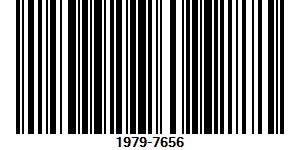DASHBOARD INFORMASI KEADAAN KEKERUHAN AIR PADA AQUASCAPE MENGGUNAKAN SENSOR TURBIDITY
DOI:
https://doi.org/10.30989/teknomatika.v13i2.1103Keywords:
Aquascape, Water Turbidity, Turbidity Sensor, NTUAbstract
Aquascaping is a more artistic activity that arranges aquatic plants, rocks and wood in an aesthetically pleasing way in the aquarium thereby giving the effect of underwater gardening. The main purpose of aquascaping is to create an underwater scene with the aspect of maintaining aquatic plants and its need for energy through photosynthesis. Several factors that must be considered in the photosynthesis process include lighting as a substitute for sunlight, the level of water turbidity and the water temperature in the Aquascape. This study aims to build an Aquascape monitoring system for the Aquascape by utilizing a turbidity sensor. This study discusses how the water turbidity sensor aids work. When the water condition changes from clean to cloudy, the tool will send an email notification in the form of a solution. The water turbidity sensor reading tool is expected to be able to determine the water content by using a turbidity sensor which is relatively cheap and has good quality. The design of this water turbidity state uses the prototype method and uses the Arduino software which is used as an interface between the PC and the sensor. This research produced a prototype of a sensor reading tool to measure the turbidity of the water using NTU units that have been determined by the minister of health for water turbidity standards 5-25 NTU. Which can be used by Aquascape lovers to get information on water turbidity levels.
References
[2] U. M. Ponorogo, S. Raharjo, E. Kurniawan, and E. Dwi Nurcahya, “Penerbitan Artikel Ilmiah Mahasiswa.”
[3] A. Saputra, “Pengukur Kadar Keasaman Dan Kekeruhan Air Berbasis Arduino,” 2016.
[4] A. Noor et al., “Aplikasi Pendeteksi Kualitas Air Menggunakan Turbidity Sensor Dan Arduino Berbasis Web Mobile,” Jurnal CoreIT, vol. 5, no. 1, 2019.
[5] R. A. Wadu, Y. S. Bungin Ada, and I. U. Panggalo, “Rancang Bangun Sistem Sirkulasi Air Pada Akuarium/Bak Ikan Air Tawar Berdasarkan Kekeruhan Air Secara Otomatis.”
[6] Y. M. , Dinata, Arduino Itu Pintar. Jakarta: PT Elex Media Komputindo, 2016.
[7] Z. Ahyadi, Belajar Antar Muka Arduino Secara Cepat Dari Contoh. Banjarmasin: Poliban Press, 2018.
[8] E. Winarno, Membuat Toko Online 2 IN 1. Jakarta: PT Elex Media Komputindo, 2015.
[9] A. Dinata, Fun Coding With MicroPython, 2nd ed. Jakarta: PT Elex Media Komputindo., 2019.
[10] D. Lewin, BeagleBone Media Center. Birmingham: Packt Publishing Ltd, 2015.










